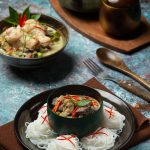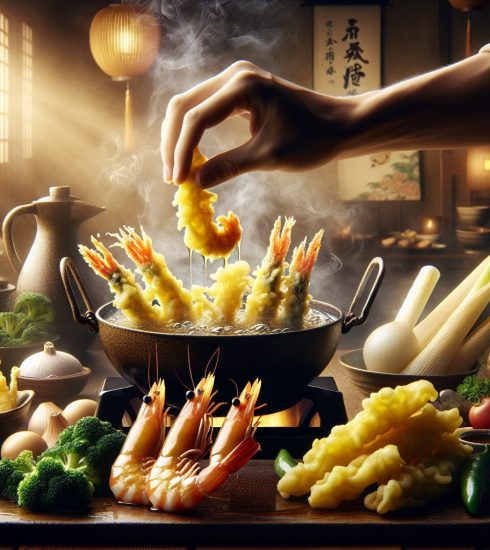exploring street food alleys in bangkok to find local treasures
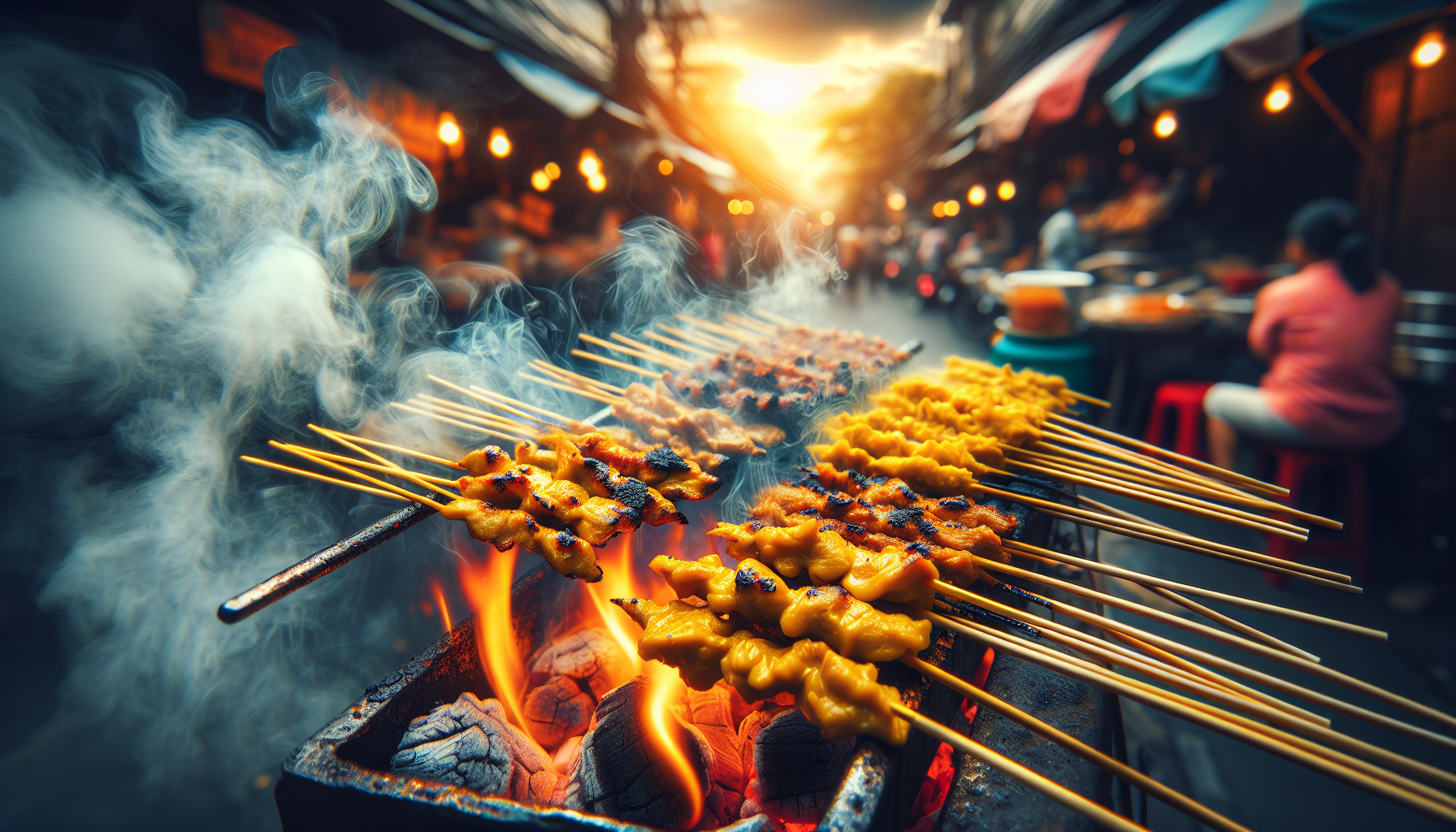 Bangkok’s bustling street food scene is a whirlwind of sensory delights, offering a vibrant reflection of the city’s rich food culture. From the moment you step onto the streets, the collision of aromas, sizzling sounds, and colorful displays becomes an immersive adventure. Navigating these alleyways requires a delicate balance of embracing the chaotic maze of vendors while knowing where to find the best bites.
Bangkok’s bustling street food scene is a whirlwind of sensory delights, offering a vibrant reflection of the city’s rich food culture. From the moment you step onto the streets, the collision of aromas, sizzling sounds, and colorful displays becomes an immersive adventure. Navigating these alleyways requires a delicate balance of embracing the chaotic maze of vendors while knowing where to find the best bites.
Many street food stalls are anchored around well-known hubs like Sukhumvit Soi 38 and Chinatown’s Yaowarat Road, but venture further into the lesser-known enclaves, and you’ll encounter true hidden gems of local dishes Bangkok takes pride in. The variety is endless — from freshly prepared som tam (papaya salad) to large pans of gooey, spicy pad kra pao and little grilled skewers of satay that waft enticingly from corner to corner. The beauty of Thai street food Bangkok is its accessibility; no matter where you find yourself, there’s bound to be delicious food steps away.
A savvy tip for navigating the crowd is to observe the locals’ go-to stops. If a stall has a long line of hungry residents, it’s almost certain that something special is being served. Another essential strategy for first-timers is to carry smaller currency, as many vendors won’t accept large bills, and certain stalls may operate cash-only. Lastly, don’t be afraid to politely ask for recommendations or customize your food for spice level and sweetness, a common practice in Bangkok food culture.
Each alleyway offers new tastes, and part of the fun is in sampling a little from each vendor. Whether you’re after munching on deep-fried delicacies, sipping hot bowls of fragrant noodle soup, or balancing sweet and savory desserts, there’s always an adventure awaiting around the corner when you step into Bangkok’s street food world.
Must-try dishes that define Bangkok’s street cuisine
When it comes to street food, Bangkok is home to a vast array of local dishes that perfectly fuse salty, sweet, sour, and spicy flavors. Each bite tells the story of Thailand’s rich cultural heritage. Whether you’re indulging in fiery papaya salad or savoring a plate of wok-fried noodles, certain dishes have become must-try staples in the city’s food culture.
One of the most beloved dishes you’ll find peppered throughout the bustling streets of Bangkok is Pad Thai. Famously composed of stir-fried rice noodles, shrimp, tofu, peanuts, and bean sprouts, Pad Thai embodies Bangkok’s interactive approach to food, where recipes are adjusted on the spot to suit individual preferences for seasoning. Gai tod (crispy fried chicken) is another quintessential Bangkok street food item. Typically marinated in garlic, coriander root, and soy sauce before deep-frying, locals queue up for its crunchy exterior and juicy interior.
Som Tam, or green papaya salad, is a must-try dish not only for its refreshing crunch but for its perfect balance of sour lime juice, heat from chilies, and the sweetness of palm sugar. Its contrasting flavors make it a cornerstone of everyday Bangkok dining. Many street vendors will heap grilled meats or sticky rice alongside it for a more filling meal.
Another classic not to miss is Khao Niew Ma Muang, Thailand’s iconic sticky mango rice. The contrast between the creamy, coconut-infused sticky rice and the cool, ripe mango makes it an irresistible option for dessert lovers.
Experimenting with diverse street foods in Bangkok guarantees that each alley you explore presents new culinary treasures. It’s all about balancing adventurous choices with local wisdom!
Hidden gems: alleys where the locals eat
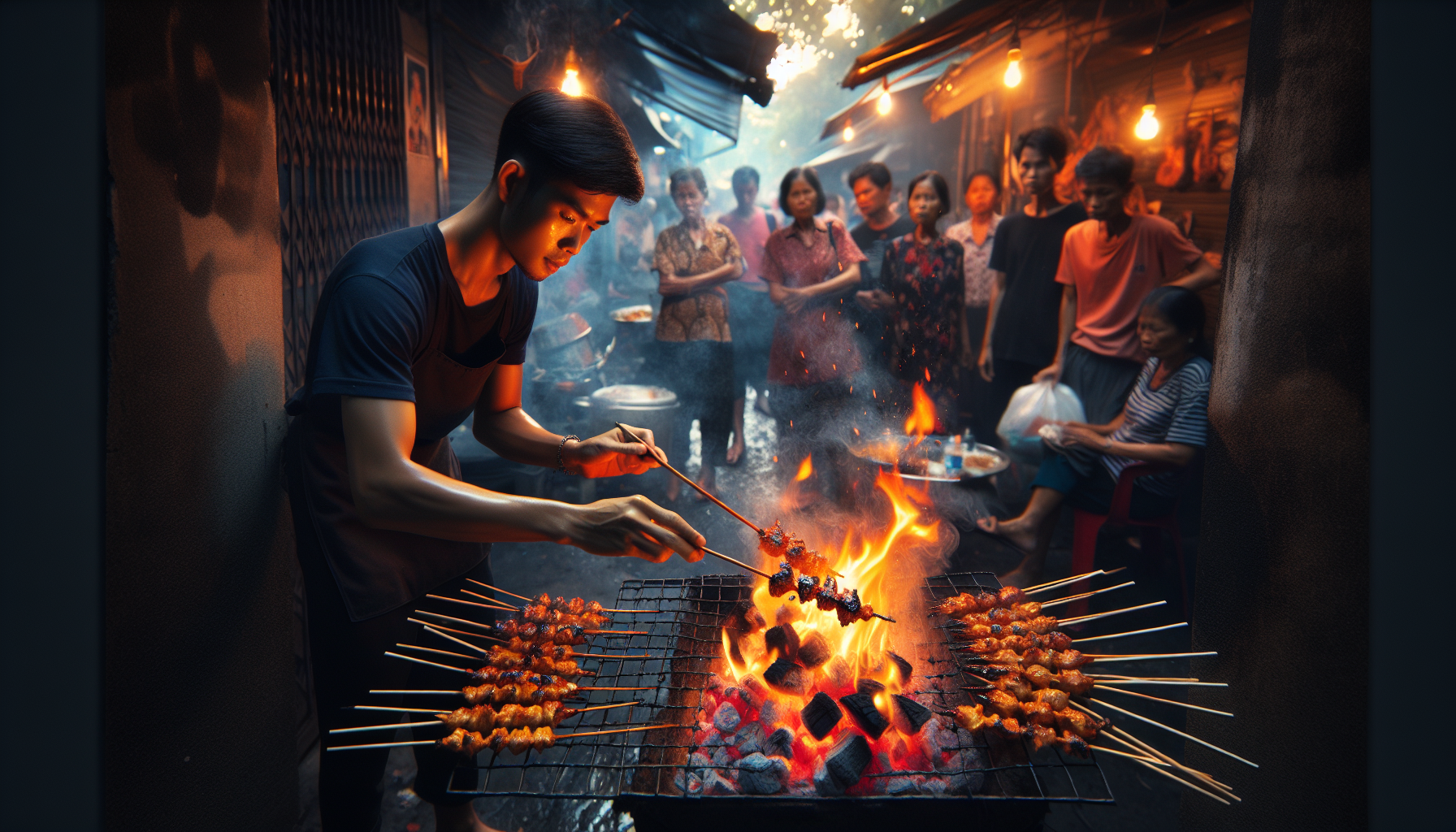 While wandering through Bangkok’s labyrinthine alleys, you’ll inevitably uncover some of the city’s best-kept culinary secrets. Away from the main drags, these hidden gems are where the locals line up, serving as unspoken endorsements for the food being dished out. If you’re looking to experience the authentic flavors of Bangkok food culture, be ready to step off the beaten path.
While wandering through Bangkok’s labyrinthine alleys, you’ll inevitably uncover some of the city’s best-kept culinary secrets. Away from the main drags, these hidden gems are where the locals line up, serving as unspoken endorsements for the food being dished out. If you’re looking to experience the authentic flavors of Bangkok food culture, be ready to step off the beaten path.
One such spot is the alley tucked away behind the bustling Silom Soi 20 market. Known as a gathering place for office workers and long-time residents, the stalls here offer regional specialties. A standout is a small noodle shop where you can savor a bowl of kuay teow reua, or boat noodles, traditionally served with a rich, savory broth flavored with spices and pork blood. The vendor’s consistency in delivering each aromatic bowl is genuinely second to none.
Similarly, in the eclectic Talat Phlu neighborhood, vendors fill narrow lanes with smoke from their charcoal grills, selling beloved local dishes Bangkok residents repeatedly return for, such as moo ping (grilled pork skewers). The pork is marinated in a mixture of coconut milk, garlic, and palm sugar before being charred to perfection, making it an absolute must when you’re in this part of the city. Alongside, you’ll likely find the quintessential khao niew, or sticky rice, for a filling yet affordable meal.
For the adventurous, the alleyway near Thonglor’s soi 55 reveals robust flavors found in pad kra pao, a spicy stir-fry made from basil, minced meat, and chilies. The dish packs a fiery punch, served with rice and often topped with a crispy fried egg for extra indulgence
Tips for enjoying and staying safe while street food dining
When dining on Bangkok’s vibrant streets, a little planning can ensure that you make the most of the experience while staying safe. One key tip is to follow your senses and the crowds. Stalls that are busy with locals are often serving the freshest, tastiest food. The turnover of ingredients in these spots tends to be faster, so you’re more likely to get something fresh and less likely to encounter digestive issues—trust the line, not always the sign.
It’s also advisable to stick to vendors where food is cooked fresh right in front of you. Street food dining offers a wide variety, from soups and wok-tossed noodles to grilled meats and deep-fried goodies. To reduce risk when exploring Thai street food Bangkok, choose stalls where you can watch your meal being prepared or reheated. This helps ensure that it hasn’t been sitting out too long in the street heat.
Hydration is crucial under Bangkok’s tropical sun, but many street vendors serve drinks with ice made from tap water, which may not sit well with travelers not accustomed to it. Opt for bottled water or drinks in sealed containers to play it safe. Additionally, packing hand sanitizers and antibacterial wipes can be a smart move since not every vendor offers a hand-washing station.
When it comes to personalizing the food, don’t hesitate to ask for milder versions of spicy dishes at street stalls. Many vendors specializing in local dishes Bangkok celebrates are more than happy to adjust the heat for you. Lastly, be cautious with seafood in hot weather unless it’s been freshly grilled or fried. Observing these tips will make your dive into Bangkok food culture not only delicious but stress-free!
Street food sustainability and supporting local vendors
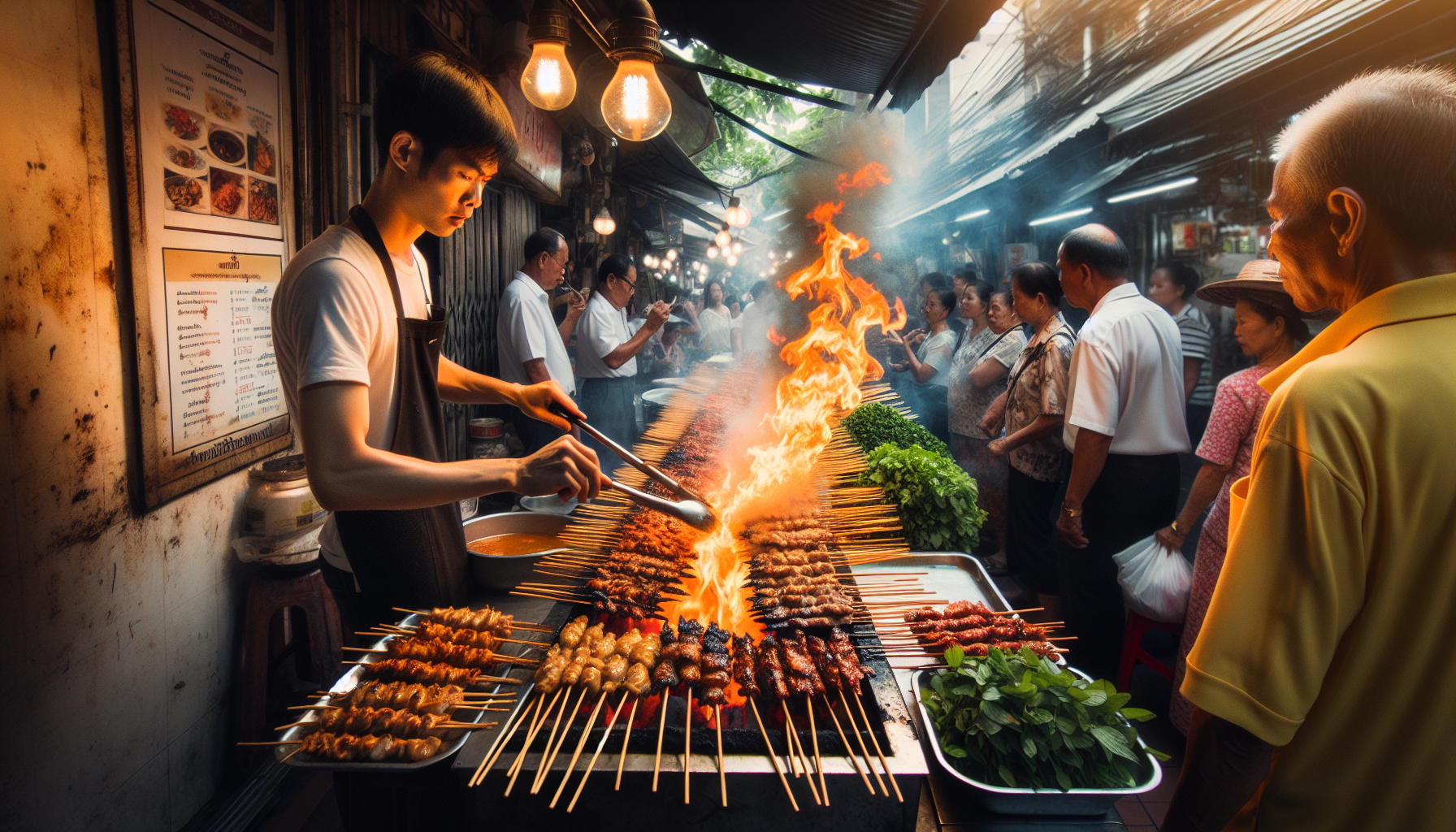 An often-overlooked aspect of enjoying Thai street food Bangkok offers is its impact on sustainability and local businesses. Bangkok’s food scene thrives on the vitality of its street vendors, many of whom are small, family-run operations passed down for generations. Supporting these local food sellers not only preserves authentic Bangkok food culture, but also promotes sustainability through their use of locally-sourced ingredients and traditional cooking methods that cut down on food waste.
An often-overlooked aspect of enjoying Thai street food Bangkok offers is its impact on sustainability and local businesses. Bangkok’s food scene thrives on the vitality of its street vendors, many of whom are small, family-run operations passed down for generations. Supporting these local food sellers not only preserves authentic Bangkok food culture, but also promotes sustainability through their use of locally-sourced ingredients and traditional cooking methods that cut down on food waste.
A significant proportion of the ingredients used in creating the local delicacies come straight from regional farms. Street food vendors tend to rely on seasonal produce, fresh herbs, and locally-caught seafood, which reduces the carbon footprint of importing ingredients from distant locations. This focus on local sourcing ensures that dishes such as a fragrant bowl of som tam or a plate of caramelized moo ping remain fresh and environmentally friendly. Additionally, many of these vendors reuse or repurpose items as part of their operations, contributing to waste reduction in small but meaningful ways.
Beyond environmental considerations, when you dine at street stalls, you’re directly supporting Bangkok’s grassroots economy. The street food scene plays a huge role in keeping more than just the food culture alive—it provides livelihoods for countless families. By choosing to feast at street-side stalls or hidden alley gems, you’re not only savoring the best of local dishes Bangkok is known for, but also ensuring these traditions continue to flourish amidst the sprawling metropolis. For a traveler, one of the best ways to give back to the local community is to eat where the locals eat—where every baht spent goes a long way in preserving this vibrant and flavorful culture.



